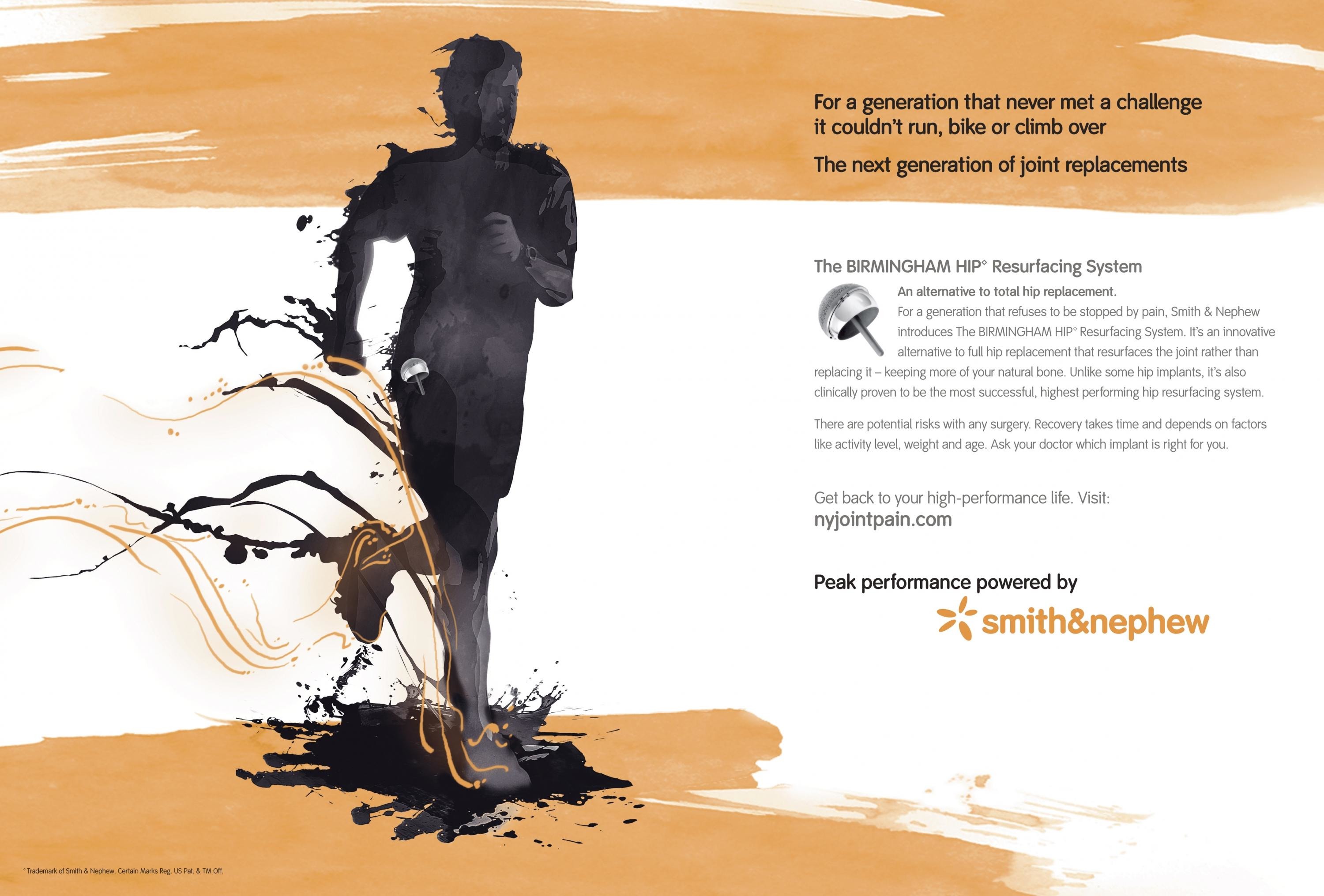Creative Data > Creative Data
DATA COMPREHENSION DESIGN
OGILVY HEALTHWORLD, London / BOEHRINGER INGELHEIM / 2017
Overview
Credits
Overview
CampaignDescription
Beauty and the beast.
Health information can be beastly and is truly beautiful only when it can be understood.
MediaStrategy
Hello white space and…
The preconceived representation of how data should be displayed and contexualised was completely re-thought from two perspectives: visual perception and learning science.
The status quo of long line length headlines and dense layouts were replaced with a novel visual architecture and methodology exploiting the eye’s natural entry and exist points:
‘White space amplification’ – emphasize and protect the central visualization with generous exclusion zones
‘Headline inversion’ – replace the placement of large headlines with (diminutive) data ‘descriptors’
‘As the crow flies’ – create a visual path of least resistance from ‘descriptor’ through the data to the ‘key take away message’
‘Data ink dominates’ – challenge visual redundancy that distracts the eye from the data
‘Tell it through type’ – distill the ‘key take away message’ to its core and apply typographic principles to selectively accentuate
To date this has been applied to 58 data sets with many more in the pipeline.
Outcome
With regard to the foundational visual architecture and methodology, research concluded:
“Quality learning design, scientifically rigorous, and easy to navigate”
“Layout and visuals are highly effective in conveying key messages”
“Clear, simple and intuitive data visualization”
With regard to the respiratory data sets:
“The COPD data comprehension design has exceeded my expectations and I’m delighted with the results! You’ve turned a wealth of complex scientific data into a set of clear, impactful and engaging visuals with a strong scientific narrative and a unique visual identity. The resulting educational materials are deceptively simple, yet supported by a deep understanding of the scientific data and an innovative and thoughtful approach. The intuitive layout and visuals convey messages clearly and beautifully. The whole range of formats has resonated strongly with local physicians across our key markets, who have commented that the content is balanced, credible and relevant for their clinical practice. This is exactly the type of work than demonstrates BI’s ongoing commitment to innovation and I’m proud to see my team in the spotlight for this initiative. This is a unique partnership between science and creative design - creativity at its best!”
Lars Grónke,
Associate Therapeutic Area Head, Medical Affairs Respiratory Diseases
Relevancy
This work challengers the norm, both in data visualisation and graphic design to achieve best in class results. We are not satisfied with producing something which is just a beautiful visualisation, but are more driven to produce something which is truly informative.
Strategy
Our starting point was a review of 273 peer-reviewed journal articles relating to the presentation and comprehension of health data. This culminated in an internal summary document: ‘Health data comprehension design: challenges and solutions’.
In parallel we immersed ourselves in learning science and the wisdom and work of some of the leading authorities in data visualization: Albert Cairo, Edward Tufte and Stephen Few to name just three.
Because data comprehension was our end goal, we developed teams of new creative partnerships (graphic designers and medical writers) to work together on each data set, bearing in mind 5 core principles:
Coherence Principle – people learn more deeply when extraneous (interesting but non-essential) facts and graphics are excluded
Signaling Principle – people learn more deeply when essential material is highlighted
Segmenting Principle – people learn more deeply when complex data is broken into segments
Multimedia Principle – people learn more deeply from words and pictures
Personalisation Principle – people learn better when words are in conversational style rather than formal style.
Each data set had to be initially represented in at least three different ways on an internal rating scale which went from “conventional” to “you must be crazy”.
Synopsis
Our campaign started with a disturbing statistic: 95% of physicians agreed that they should understand all the data in medical journals and papers, shockingly 75% admitted that they do not understand all the data presented to them.
Chronic obstructive pulmonary disease (COPD) is a public health crisis: World Health Organisation estimates show that it could be the third leading cause of death worldwide in just over ten years.
We were tasked by Boehringer Ingelheim to improve understanding of COPD and its treatment, by effectively communicating data to healthcare professionals on COPD disease awareness and progression, as well as treatment interventions that included the evidence supporting effective use of their own products).
To address this brief we set our own internal objective: apply the science of learning, graphic design and health data comprehension to improve data literacy i.e. ensure that our target audiences really would understand the data presented to them.
More Entries from Data Driven Targeting in Creative Data
24 items
More Entries from OGILVY HEALTHWORLD
24 items










